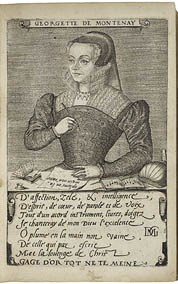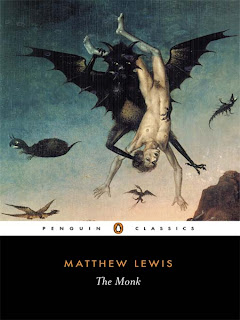 |
| Byron by Richard Westall |
To celebrate the birthday of George Gordon, Lord Byron, the renowned poet, we present an account of him by Captain Gronow, from his Reminiscences, published in 1862, written long after the events he describes. Rees Howell Gronow (1794-1865) was a captain in the Welsh Grenadier Guards.
From Gronow’s Reminiscences:
I knew very little of Lord Byron personally, but lived much with two of his intimate friends, Scrope Davis and Wedderburn Webster; from whom I frequently heard many anecdotes of him. I regret that I remember so few; and wish that I had written down those told me by poor Scrope Davis, one of the most agreeable men I ever met.
When Byron was at Cambridge, he was introduced to Scrope Davis by their mutual friend, Matthews, who was afterwards drowned in the river Cam. After Matthews’s death, Davis became Byron’s particular friend, and was admitted to his rooms at all hours. Upon one occasion he found the poet in bed with his hair en papillote, upon which Scrope cried, “Ha, ha! Byron, I have at last caught you acting the part of the Sleeping Beauty.”
Byron by Thomas Philipps (1770-1845)
Byron, in a rage, exclaimed, “No, Scrope; the part of a d—-d fool, you should have said.”
“Well, then, anything you please; but you have succeeded admirably in deceiving your friends, for it was my conviction that your hair curled naturally.”
“Yes, naturally, every night,” returned the poet; “but do not, my dear Scrope, let the cat out of the bag, for I am as vain of my curls as a girl of sixteen.”
When in London, Byron used to go to Manton’s shooting-gallery, in Davis street, to try his hand, as he said, at a wafer. Wedderburn Webster was present when the poet, intensely delighted with his own skill, boasted to Joe Manton that he considered himself the best shot in London. “No, my lord,” replied Manton, “not the best; but your shooting, to-day, was respectable;” upon which Byron waxed wroth, and left the shop in a violent passion.
Newstead Abbey, Byron’s estate, 12 miles north of Nottingham
Lords Byron, Yarmouth, Pollington, Mountjoy, Walliscourt, Blandford, Captain Burges, Jack Bouverie, and myself, were in 1814, and for several years afterwards, amongst the chief and most constant frequenters of this well-known shooting-gallery, and frequently shot at the wafer for considerable sums of money. Manton was allowed to enter the betting list, and he generally backed me. On one occasion, I hit the wafer nineteen times out of twenty.
Byron lived a great deal at Brighton, his house being opposite the Pavilion. He was fond of boating, and was generally accompanied by a lad, who was said to be a girl in boy’s clothes. This report was confirmed to me by Webster, who was then living at Brighton. The vivid description of the page in Lara, no doubt, gave some plausibility to this often-told tale. I myself witnessed the dexterous manner in which Byron used to get into his boat; for, while standing on the beach, I once saw him vault into it with the agility of a harlequin, in spite of his lame foot.
On one occasion, whilst his lordship was dining with a few of his friends in Charles Street, Pall Mall, a letter was delivered to Scrope Davis, which required an immediate answer. Scrope, after reading its contents, handed it to Lord Byron. It was thus worded:–
“MY DEAR SCROPE,–Lend me 500L. for a few days; the funds are shut for the dividends, or I would not have made this request. “G. BRUMMELL.”
The reply was:–
“My DEAR BRUMMELL,–All my money is locked up in the funds. “SCROPE DAVIS.”
This was just before Brummell’s escape to the Continent.
Dining Room Fireplace, Newstead Abbey
I have frequently asked Scrope Davis his private opinion of Lord Byron, and invariably received the same answer–that he considered Lord Byron very agreeable and clever, but vain, overbearing, conceited, suspicious, and jealous. Byron hated Palmerston, but liked Peel, and thought that the whole world ought to be constantly employed in admiring his poetry and himself: he never could write a poem or a drama without making himself its hero, and he was always the subject of his own conversation.
Bust of Byron, Newstead Abbey
During one of Henry Hobhouse’s visits to Byron, at his villa near Genoa, and whilst they were walking in the garden, his lordship suddenly turned upon his guest, and, apropos of nothing, exclaimed, “Now, I know, Hobhouse, you are looking at my foot.” Upon which Hobhouse kindly replied, “My dear Byron, nobody thinks of or looks at anything but your head.”
Abbey Ruins, Newstead Abbey
For a two-part filmed tour of Newstead Abbey, click here. Look for the Guided Tour on the right.
Happy Birthday, Lord Byron…









.jpg)





















